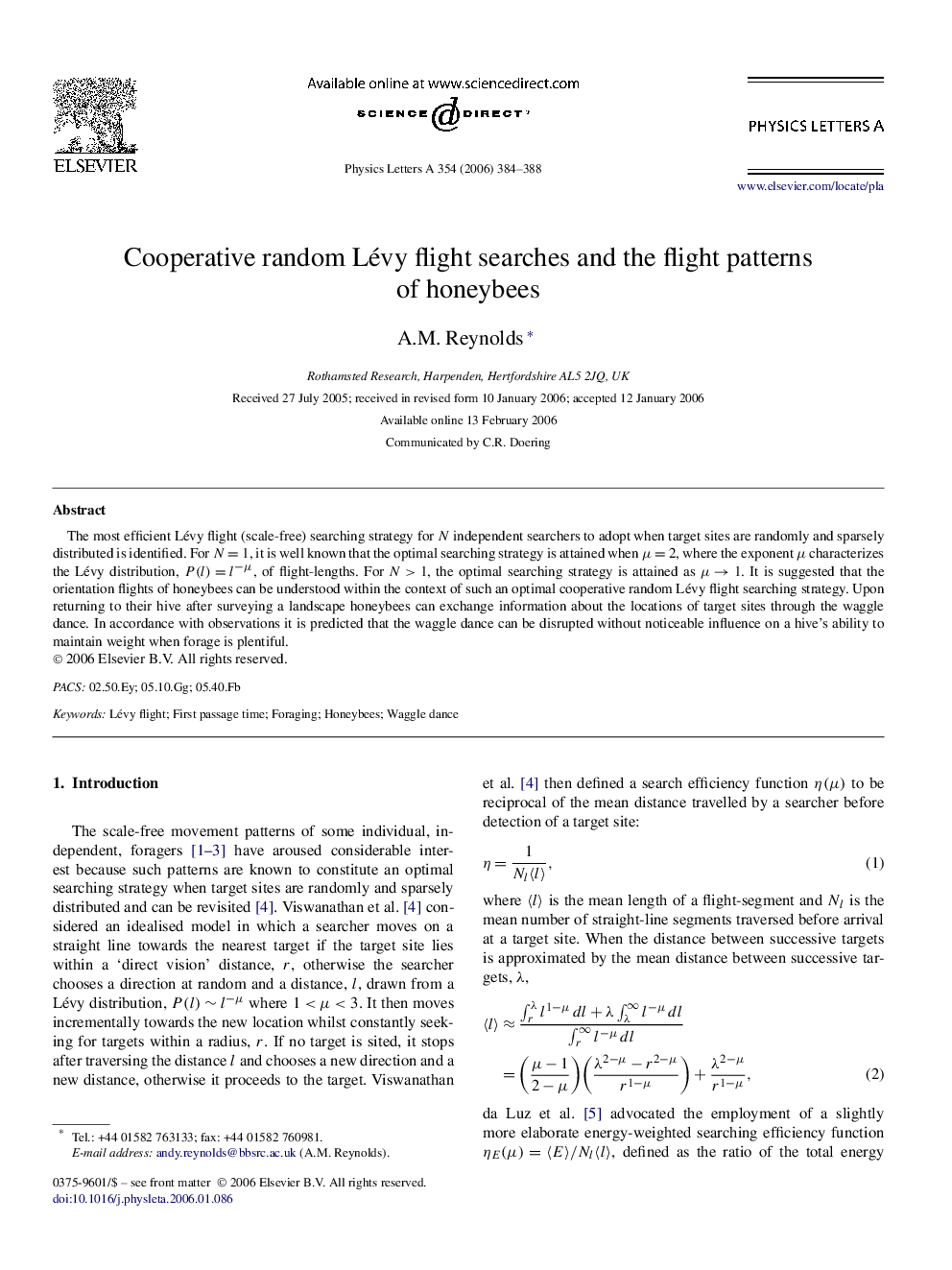| Article ID | Journal | Published Year | Pages | File Type |
|---|---|---|---|---|
| 1864483 | Physics Letters A | 2006 | 5 Pages |
The most efficient Lévy flight (scale-free) searching strategy for N independent searchers to adopt when target sites are randomly and sparsely distributed is identified. For N=1N=1, it is well known that the optimal searching strategy is attained when μ=2μ=2, where the exponent μ characterizes the Lévy distribution, P(l)=l−μP(l)=l−μ, of flight-lengths. For N>1N>1, the optimal searching strategy is attained as μ→1μ→1. It is suggested that the orientation flights of honeybees can be understood within the context of such an optimal cooperative random Lévy flight searching strategy. Upon returning to their hive after surveying a landscape honeybees can exchange information about the locations of target sites through the waggle dance. In accordance with observations it is predicted that the waggle dance can be disrupted without noticeable influence on a hive's ability to maintain weight when forage is plentiful.
